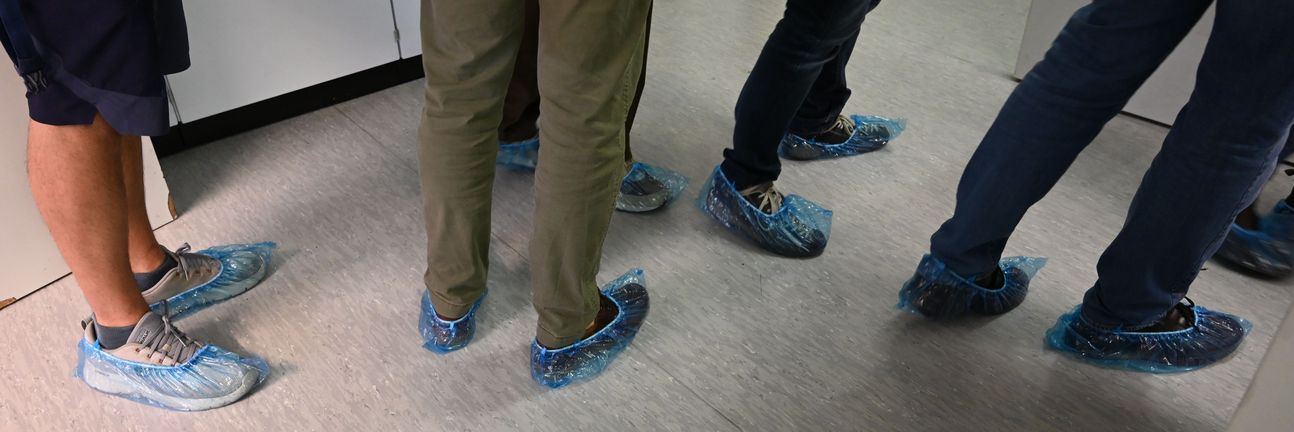From high-school students to interested seniors – it was a diverse audience that gathered in the seminar room of the Chair of Experimental Solid State Physics at LMU on Thursday evening to learn more about research into novel quantum materials. Maximilian Daschner, a postdoctoral researcher at the Chair, introduced the 30 visitors to the world of so-called two-dimensional materials, explaining how scientists produce artificial, ultra-thin crystals by layering individual, atomically thin layers of different materials on top of each other. “2D opens new doors,” Daschner emphasized, explaining that materials with exciting properties such as superconductivity or special forms of magnetism could be tailored this way. The material properties depend, among other things, on the elements that make up the layers, the number of layers, and whether they are stacked in parallel or twisted against each other. Much of the presentation focused on the “miracle material“ graphene, which becomes superconducting when two layers are twisted at a 1.1-degree angle. Following the lecture, there were many interested questions, particularly about the potential applications of graphene.
Divided into two groups, the visitors were then guided through the various laboratories. They were able to see where and how artificial crystals are produced, which stations are passed through, and the technical infrastructure behind the laboratories. Many visitors found it amusing and interesting at the same time to see that the preparation laboratory actually uses simple scotch tape to remove individual graphene layers from the original graphite, that is to exfoliate them, as it is called in technical jargon. The “tools” then became much more complex in the clean rooms that followed. Wearing suitable overshoes for their street shoes, the guests were allowed to enter the anteroom and take a look at the various machines. The doctoral students vividly explained how fine structures are etched into the material samples using plasma or how electronic contacts for the various measurements are vaporized onto the samples using electron beam lithography. Finally, in the cryogenic laboratory, visitors learned how two-dimensional crystals' properties are investigated at temperatures just above absolute zero. They were also able to see the technical infrastructure behind the measurements in the individual laboratories, including the equipment room with its many pumps and helium containers for the cryostats, as well as the water cooling circuit whose pipes run through all the corridors. Throughout the tour, the interested audience asked plenty of questions, and the inner of the cryostat became a popular subject for souvenir photos.
More information:
All other events in the “MQV-Einblicke” series, with links to registration, can be found here: https://www.munich-quantum-valley.de/quantum-2025/mqv-einblicke
An overview of all further events organized by MQV and its partners to mark the International Year of Quantum can be found here: https://www.munich-quantum-valley.de/quantum-2025
